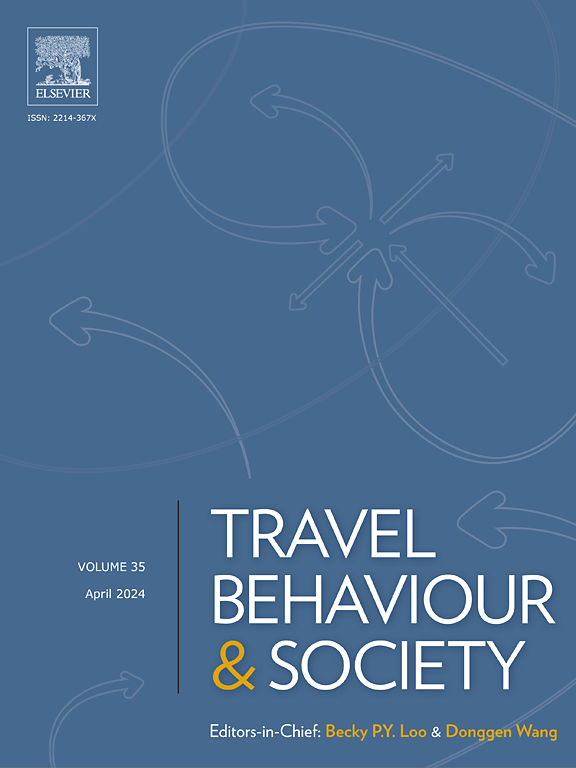Understanding the emerging interregional travel amid shifting societal and technological trends
IF 5.7
2区 工程技术
Q1 TRANSPORTATION
引用次数: 0
Abstract
This study examined interregional travel, a submarket of long-distance travel (LDT) ranging from 50 to 600 miles (80–966 km) one-way. As personal travel extends beyond neighboring metropolitan regions, it is crucial to understand interregional travel and necessitate appropriate transportation investments. Utilizing data from multiple U.S. National Household Travel Surveys (NHTSs), this study explored historical/national travel trends to derive a working definition of interregional travel. The study then applied a zero-inflated ordered probit model to overcome the constraints of NHTS data to analyze interregional travel behavior. This study profiled four traveler groups segmented by travel purposes and travel regimes and investigated the impacts of socioeconomic determinants of interregional tour generation and frequency. Specifically, age, wage, vehicle ownership, and living location influenced both tour generation and tour frequency, and employment status influenced tour generation. The derived person tour generation rate offers new insights to support travel demand analysis for interregional travel. The findings shed light on the understanding of interregional tour-making, suggest future NHTS data collection and analysis, and inform targeted transportation investments and policy deliberations on interregional transportation planning.
了解在不断变化的社会和技术趋势中出现的跨区域旅行
这项研究调查了区域间旅行,这是长途旅行(LDT)的一个子市场,单程距离为50至600英里(80-966公里)。随着个人旅行扩展到邻近的大都市区之外,了解区域间旅行和适当的交通投资是至关重要的。本研究利用多个美国全国家庭旅行调查(NHTSs)的数据,探索了历史/全国旅行趋势,得出了跨地区旅行的工作定义。在此基础上,利用零膨胀有序概率模型克服了NHTS数据的约束,对区域间出行行为进行了分析。本研究分析了按旅游目的和旅游制度划分的四个旅游群体,并调查了社会经济因素对区域间旅游产生和频率的影响。具体而言,年龄、工资、车辆拥有量和居住地点对旅游产生和旅游频率都有影响,就业状况对旅游产生有影响。由此得出的人员旅游生成率为支持跨区域旅游的旅游需求分析提供了新的见解。研究结果阐明了对区域间旅游的理解,为未来的NHTS数据收集和分析提供了建议,并为有针对性的交通投资和区域间交通规划的政策审议提供了信息。
本文章由计算机程序翻译,如有差异,请以英文原文为准。
求助全文
约1分钟内获得全文
求助全文
来源期刊

Travel Behaviour and Society
TRANSPORTATION-
CiteScore
9.80
自引率
7.70%
发文量
109
期刊介绍:
Travel Behaviour and Society is an interdisciplinary journal publishing high-quality original papers which report leading edge research in theories, methodologies and applications concerning transportation issues and challenges which involve the social and spatial dimensions. In particular, it provides a discussion forum for major research in travel behaviour, transportation infrastructure, transportation and environmental issues, mobility and social sustainability, transportation geographic information systems (TGIS), transportation and quality of life, transportation data collection and analysis, etc.
 求助内容:
求助内容: 应助结果提醒方式:
应助结果提醒方式:


